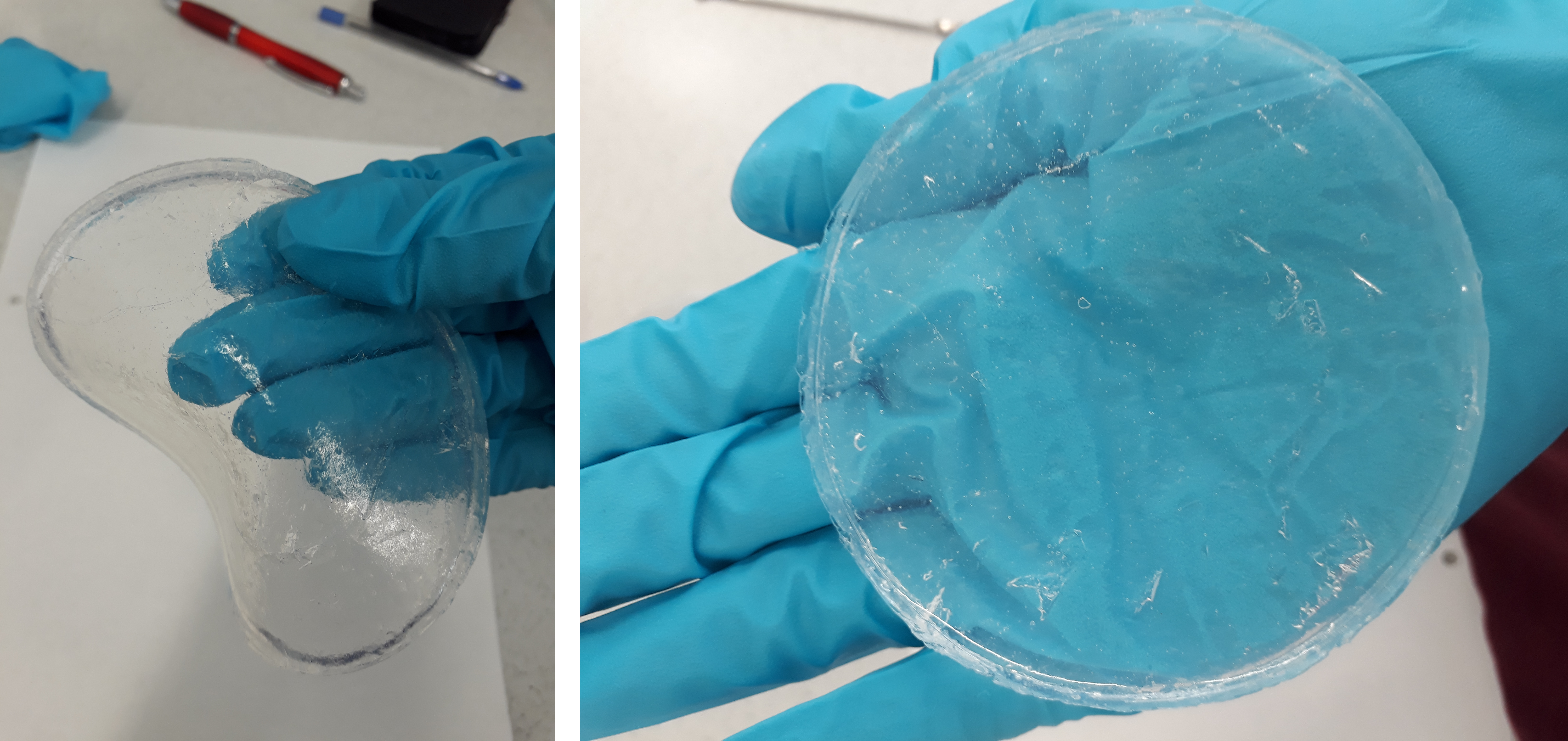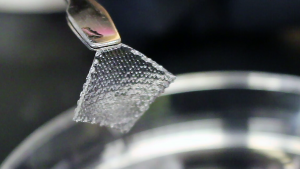
A hydrogel is a macromolecular polymer gel constructed of a network of crosslinked polymer chains. Hydrogels are synthesized from hydrophilic monomers by either chain or step growth, along with a functional crosslinker to promote network formation. A net-like structure along with void imperfections enhance the hydrogel’s ability to absorb large amounts of water via hydrogen bonding. As a result, hydrogels are self-healing in nature. They also develop firm yet have great elastic mechanical properties. Self-healing refers to the spontaneous formation of new bonds when old bonds are broken within a material. The ability to self-heal is very attractive to bio-printing and systems related to the body. Human biology is a system based on reproductive and self-healing components, thus the need for self-healing agents and materials is paramount.
The chemical structure of a hydrogel allows for a variety of chemical reactions to occur. Depending on their composition, they are responsive to various stimuli including heating, pH, light, and other chemical agents. The important property to understand within a hydrogel is the ability to capture water while simultaneously maintaining its chemical bonding structure and therefore its three-dimensional structure.

The stability of a three-dimensional structure is important for 3D printing. The main usage of hydrogels within bioprinting are as scaffolds within tissue engineering. Tissue engineering is defined as a combination of materials, engineering, and cells to improve or replace biological organs. This needs finding proper types of cells and culturing them in a suitable scaffold under appropriate conditions. Hydrogels are an appealing scaffold material because their structures are similar to the extracellular matrix of many tissues, they can often be processed under relatively mild conditions, and they may be delivered in a minimally invasive manner.
In terms of bio-engineering, scaffold creation with hydrogels can be done through two methods: natural derivation or synthetic derivation. For a 3D bio-printing enthusiast, it is beneficial to have a synthetic method. These methods are easy to control in terms of chemistry and structure. This allows for manipulable properties. Synthetic bio-engineering is the most probable route for anything 3D bio-printing related within a home setting. It is easier to experiment within this context. It is also easier to create specific skin properties for different areas of the body with easily manipulable synthetic hydrogels.
In summary, the benefits of hydrogels and 3D bio-printing are tremendous in terms of easily engineer-able materials within synthetic methods. This allows for a variety of uses for hydrogel materials. Within the context of materials it is optimal and gives us a lot of flexibility on its own. We will discuss in our next article different 3D bio-printing setups. This will also allow us to understand hydrogels in the context of a machine and why they are beneficial, as well as some limitations that need to be understood.
This article is part of a series Bioprinting 101 which hopes to teach people how to bioprint in the home, the first article is here.


19 Replies to “Bioprinting 101: Part 2 Hydrogels”
Comments are closed.